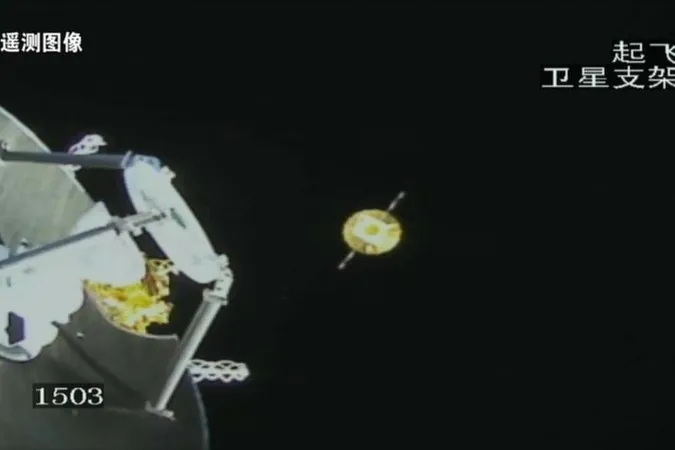
China's Queqiao-2 Satellite: A Game Changer for Global Lunar Exploration
2025-05-20
Author: John Tan
China's New Era in Lunar Exploration
In a groundbreaking development for lunar exploration, China's Queqiao-2 relay satellite is now fully operational and ready to assist future moon missions not just from China, but from other nations as well. The satellite is a pivotal part of China's ambitious lunar exploration program, as revealed by the country's Deep Space Exploration Lab.
Support for International Missions
Launched in March of last year, Queqiao-2, also affectionately dubbed Magpie Bridge 2, has already proven its worth by supporting Earth-moon communications for the successful Chang'e 6 mission, which brought back samples from the moon’s far side. This technological marvel is now set to provide relay services for various international lunar endeavors, ushering in a new era of cooperative lunar exploration.
Advanced Technology Pushing Boundaries
Equipped with cutting-edge scientific instruments, Queqiao-2 boasts an extreme ultraviolet camera, a two-dimensional coded energetic neutral atom imager, and an Earth-moon very long baseline interferometry (VLBI) system. For 14 months, this satellite has been diligently gathering data, capturing stunning global images and conducting essential scientific tasks.
Crucial Discoveries and Observations
Among its remarkable achievements, the satellite's extreme ultraviolet camera successfully captured the first ever global 83.4-nanometer image of the ionosphere. This crucial information allows scientists to understand better how solar activity influences the plasmasphere, enhancing our understanding of space weather.
Moreover, Queqiao-2's VLBI system has teamed up with the Shanghai 65m Radio Telescope to extend the observation baseline to an impressive 380,000 kilometers. This unprecedented capability has enabled the satellite to observe far-off cosmic targets, including the mysterious radio source A00235 and the Chang'e 6 orbiter itself.
What's Next for Queqiao-2?
Looking to the future, Queqiao-2 is set to play an integral role in China's upcoming Chang'e 7 and Chang'e 8 missions. The Chang'e 7 mission, aimed at exploring the south pole of the moon, plans to launch around 2026, while the Chang'e 8 mission, scheduled for around 2028, will experiment with in-situ resource utilization on the lunar surface. With Queqiao-2 supporting these ventures, the next chapter of lunar exploration promises to be more exciting and collaborative than ever.




 Brasil (PT)
Brasil (PT)
 Canada (EN)
Canada (EN)
 Chile (ES)
Chile (ES)
 Česko (CS)
Česko (CS)
 대한민국 (KO)
대한민국 (KO)
 España (ES)
España (ES)
 France (FR)
France (FR)
 Hong Kong (EN)
Hong Kong (EN)
 Italia (IT)
Italia (IT)
 日本 (JA)
日本 (JA)
 Magyarország (HU)
Magyarország (HU)
 Norge (NO)
Norge (NO)
 Polska (PL)
Polska (PL)
 Schweiz (DE)
Schweiz (DE)
 Singapore (EN)
Singapore (EN)
 Sverige (SV)
Sverige (SV)
 Suomi (FI)
Suomi (FI)
 Türkiye (TR)
Türkiye (TR)
 الإمارات العربية المتحدة (AR)
الإمارات العربية المتحدة (AR)